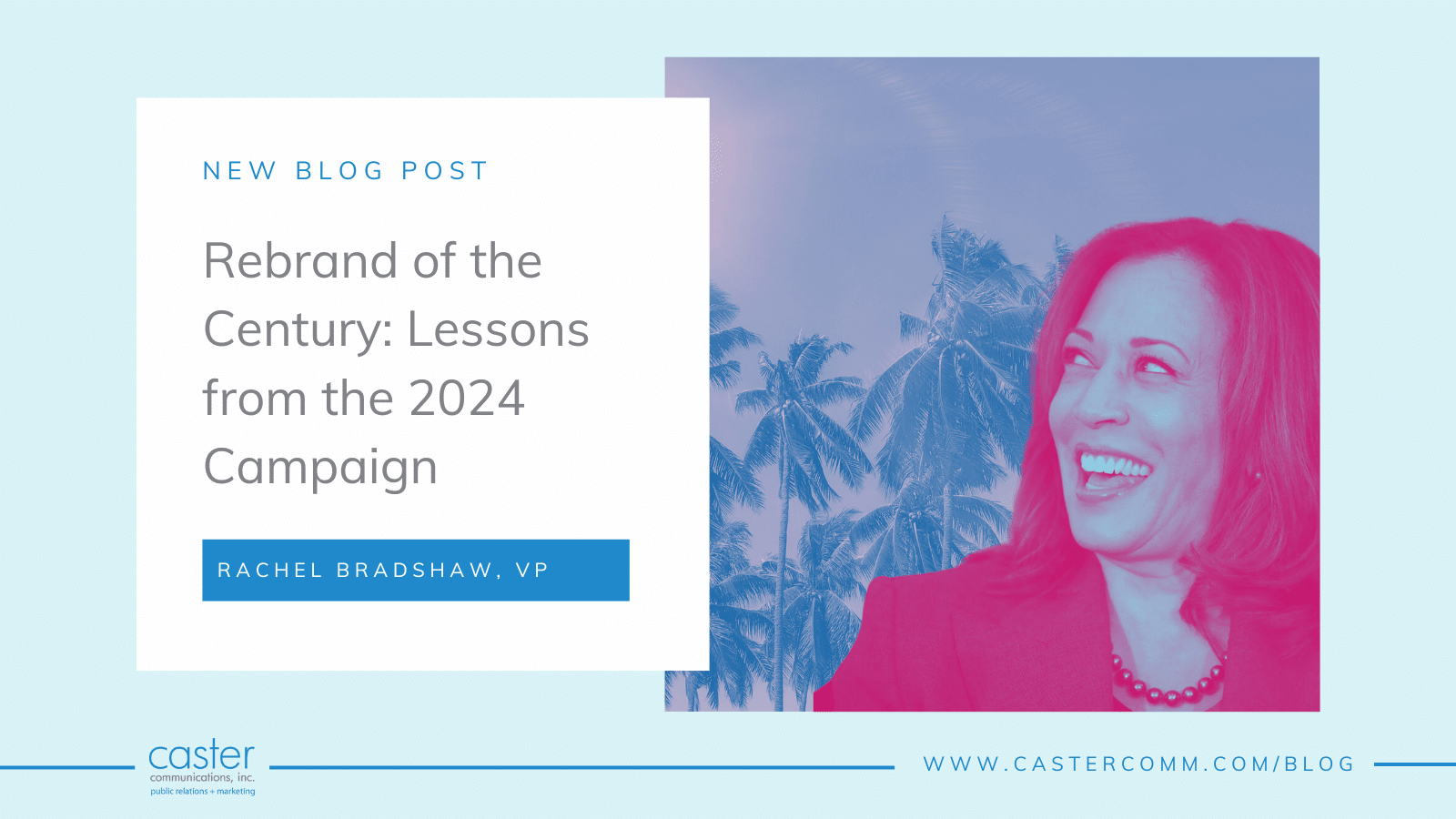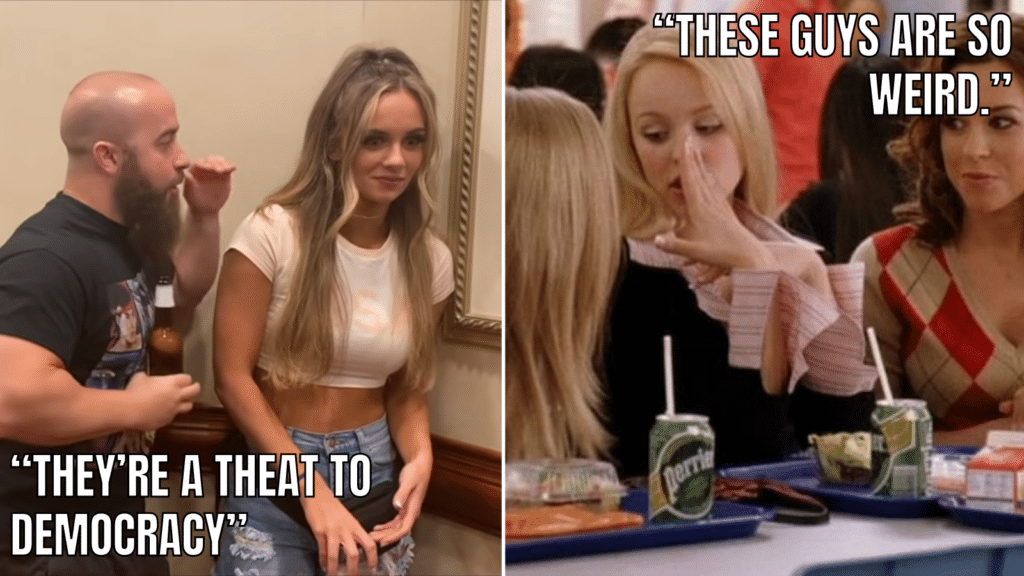
Rebrand of the Century: Lessons from the 2024 Campaign
The 2024 presidential campaign started as a matchup between two established brands with deeply entrenched perceptions. Then, when President Joe Biden dropped out of the race and endorsed his VP, everything changed.
The new candidate, Kamala Harris, had great name recognition but poor brand identity. She has been a relatively under-the-radar VP, and remained an “unknown quantity” to many swing-state voters. Early snap polls showed her either maintaining Biden’s position behind Trump, or faring slight worse. Less than two weeks later, the Harris campaign had closed the polling gap across key swing states, turning a projected Republican blowout into a statistical dead heat. By the time you read this, the political landscape may have shifted again—but no matter what, the Harris campaign’s early branding efforts were demonstrably effective.
Politics aside: when you see someone do something right, learn from them. In today’s blog, we’re looking at the 2024 presidential campaign as a PR case study, looking for lessons on how to launch, re-brand, or respond to a competitor successfully.
Lesson #1: Use the Media’s Attention While You Have It
In the days after the debate between Biden and Trump, the attention of the entire world was riveted on the President. His debate performance was roundly acknowledged as a disaster. Perhaps, in some other timeline, Biden used that attention to go on a whirlwind media blitz and prove that debate night was a fluke. In our universe, Biden retreated. He delayed taking a media interview about the debate for a week. Meanwhile, op-eds and blind items questioning Biden’s ability to continue the campaign dominated headlines and homepages.
By contrast, Harris didn’t lose a second when Biden dropped out. She wasn’t guaranteed the nomination, but she used every second of her sudden front-runner status to secure it. She called 100 Democratic party leaders in the first ten hours, scoring endorsements from practically every other feasible candidate. Each endorsement offered a new headline to feed the hungry press, building momentum that quickly morphed into inevitability. Within 36 hours, she had enough delegate support to sew up the nomination, and her team made sure everyone knew about it as it happened.
There’s a really clear lesson here for brands of all types: no announcement is enough on its own. When you launch a product, service or company update, you must follow up with additional news that builds on the story. Silence following any major event – positive or negative – is a missed opportunity and a massive risk. If you neglect media outreach, you cannot control the messages that fill the void.
Lesson #2: Less Heat, More Burn
Democrats made an interesting pivot in their messaging in the first week of the Harris campaign. Biden and Trump had been calling each other a “threat to democracy” for months. Harris and her surrogates have started just calling their opponents “weird.” Originated by Harris’s running mate, Governor Tim Walz, the tone of this messaging is less dour concern and more folksy bemusement. “Weird” might seem like a weaker attack than “threat to democracy,” but judging by Walz’s virality and the recent flood of media think–pieces, it’s working.
Counter-intuitively, a softer message can land harder. This idea translates directly to brand messaging: Companies often want to refer to their new product as “revolutionary,” “game-changing,” or “paradigm-shifting.” They may even sincerely believe that sentiment– but saying so accomplishes little. People are skeptical of grand, sweeping claims. Sometimes, the best way to differentiate yourself from a rival making big claims is not to match their message but to make a narrower claim that resonates with your core audience as true. The Harris campaign’s toned-down message helps brand the VP as more credible, especially among swing voters who find the “threat to democracy” thing a bit much.

Left: the Biden and Trump campaigns make their pitch to swing state voters; Right: the Harris team does the same.
Lesson #3: Don’t Let Your Past Control Your Present
Remember when Harris ran for President in 2020? It didn’t go great. One of the most damaging hits to her brand during that especially polarized primary was the “Kamala is a cop” meme. In the wake of several high-profile instances of police violence against Black citizens, attitudes toward the police were at a nadir, especially on the political left. Kamala’s history of referring to herself as California’s “top cop” was supposed to help her win moderates; instead, it was a major campaign liability that made it difficult for her to build traction with the Democratic party base.
You’d think Harris might want to stay away from the hot stove that burned her in the past – but instead, she reached out, grabbed a frying pan, and swung for her opponent’s face. Days into the campaign, she began touting her experience as a prosecutor in contrast to her opponent’s history as a defendant. This was a risk, since many on the left still harbor concerns about her past as California Attorney General. However, the media landscape in 2024 is very different than 2020, with round-the-clock coverage of the criminal proceedings against former President Trump. In this new context, the Harris campaign has been able to package a very neat “cop versus criminal” storyline for the left-leaning media.
This kind of reversal is why I’m a bit of a messaging hoarder. Sometimes, a previously useful bit of branding stops resonating. It’s fine to shelve that messaging, but don’t trash it. Instead, examine the broader media and cultural landscape that caused it to fail, and be on alert for when those circumstances change. Strengths can become liabilities and vice versa – it’s how things resonate NOW that matters.
In politics, as in PR, how you communicate matters almost as much as what you say. There are some world-class communicators on both sides of the political aisle, and the Harris campaign has just put on a master class in brand launch strategy. I’ll be watching the rest of the race obsessively to see how campaign messaging strategies shift and interact – and look for lessons to take home to my clients.
For more from Caster on media strategy, check out:

